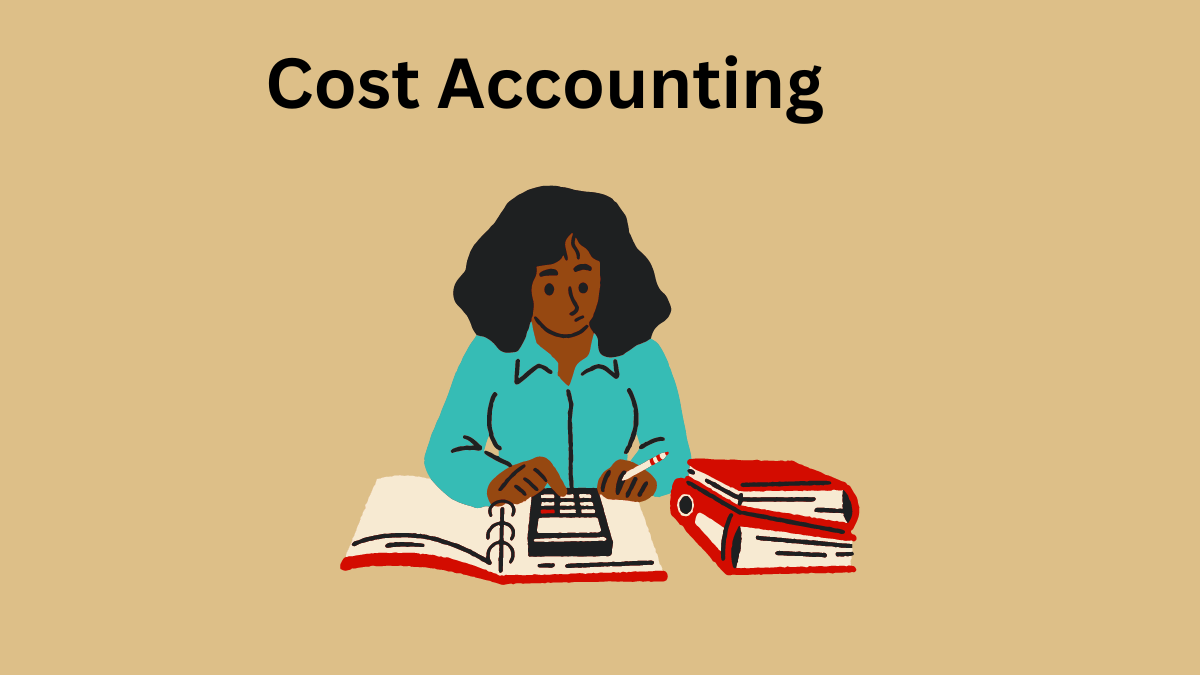What is Cost Accounting?
Cost Accounting is a Branch of Accounting that has evolved to overcome the limitations of financial accounting. It is the process of accounting for cost, which is concerned more with the ascertainment, allocation, distribution, and accounting aspects of cost. It is that branch of accounting, which deals with the classification, recording, allocation, summarization, and reporting of current and prospective costs. It is the formal mechanism for ascertaining and controlling the cost of products and services.
It is an internal reporting system that aims to assist the management in planning and decision-making. It primarily emphasizes cost and deals with collection, analysis, interpretation, and presentation for managerial decision-making on various business problems.
Cost accounting is more concerned with short-term planning and its reporting period is much less than financial accounting. It deals with historical data but it is also futuristic in approach. A cost accounting system cannot be installed without a proper financial accounting system. Each organization can develop a costing system best suited to its individual needs. In financial accounting, the major emphasis is given to cost classification based on types of transaction e.g., salaries, repair, insurance, stories, etc. However, in cost accounting, the emphasis is laid on functions, activities, products, process internal planning and control, and information needs of the organization.
According to Harold J. Weldon “Cost accounting is the classification, recording, and appropriate allocation of expenditure for the determination of the cost of products or services, and for the presentation of suitability arranged data for control and guidance of management.”
Objectives and Functions of Cost Accounting
To ascertain cost
The main objective of cost accounting is to ascertain the cost of goods and services. The expenses incurred while producing goods or rendering services are called costs. Some examples of costs are material, labor, and other direct and indirect expenses. Under cost accounting, costs are collected, classified, and analyzed to find out the total as well as per unit cost of goods, services, processes, contracts, etc.
To analyze cost and loss
Another objective is to analyze the cost of each activity. The analysis of cost is necessary to classify the cost into controllable or uncontrollable, relevant or irrelevant, profitable or unprofitable, etc. Similarly, under cost accounting, the effects of misuse of material, idle time, breakdown, or damage of machine on the cost are also analyzed.
To control cost
Cost control is a technique that is used to minimize the cost of products and services without compromising on quality. Cost accounting aims to control the cost by using various techniques, such as standard costing and budgetary control.
To help in the fixation of the selling price
Another important objective is to help in the fixation of the selling price. The costs are accumulated, classified, and analyzed to ascertain cost per unit. The selling price per unit is calculated by adding a certain profit to the cost per unit. under cost accounting, different techniques such as job costing, bath costing, output costing, service costing, etc are used to determine the selling price.
To aid the management
Cost accounting aims to assist the management in planning and its implementation by providing necessary costing information that also enables the evaluation of past activities as well as future planning.
Importance / Advantages of Cost Accounting
Help in controlling cost
Cost accounting helps in controlling costs by applying some techniques such as standard costing and budgetary control.
Provides necessary cost information
It provides necessary cost information to the management for planning, implementation, and controlling.
Ascertains the total and per unit cost of production
It ascertains the total and per unit cost of production of goods and services that helps to fix the selling price as well.
Introduces cost reduction programs
It helps to introduce and implement different cost-reduction programs.
Discloses the profitable and non-profitable activities
It discloses the profitable and non-profitable activities that enable management to decide to eliminate or contract unprofitable activities and expand or develop the profitable activities.
Beneficial to workers
It is beneficial to workers as well since it emphasizes the efficient utilization of labor and the scientific system of wage payment.
Provides information for the comparison of cost
It provides reliable data and information that enables the comparison of costs between periods, volumes of output, departments, and processes.
Check and accuracy of financial accounts
It helps check the accuracy of financial accounts. This is done by preparing a cost reconciliation statement.
Limitations of Cost Accounting
Lack of uniformity
Cost accounting lacks a uniform procedure. Two equally competent cost accounts may arrive at different results from the same information. Keeping this limitation in view, all cost accounting results can be taken as mere estimates.
Costly
Many formalities are to be observed by a small and medium-sized concern due to which the establishment and running costing system becomes more expensive.
Ignore the futuristic situation
The contribution of cost accounting for handling futuristic situations has not been much. For example, it has not evolved so far any tool for handling inflationary situations.
Lack of double entry system
Under cost accounting, a double-entry system is not adopted. So it does not enable checking the arithmetical accuracy of the transaction.
Developing stages
Cost accounting is in the developing stage since its principles, concepts, and conventions are not fully developed
